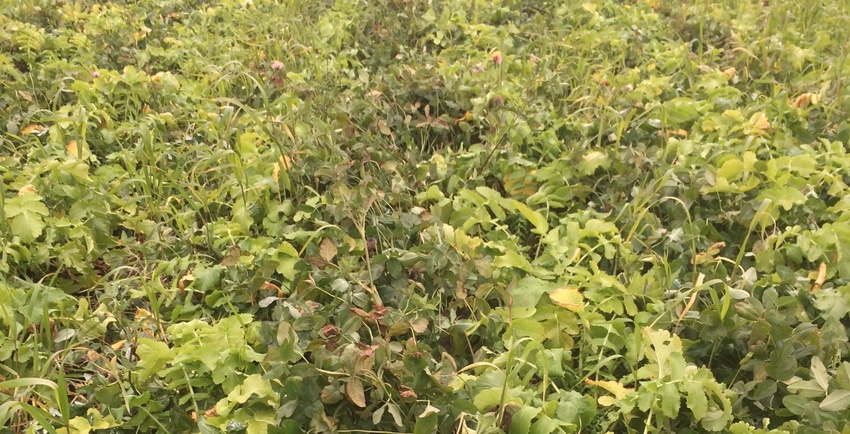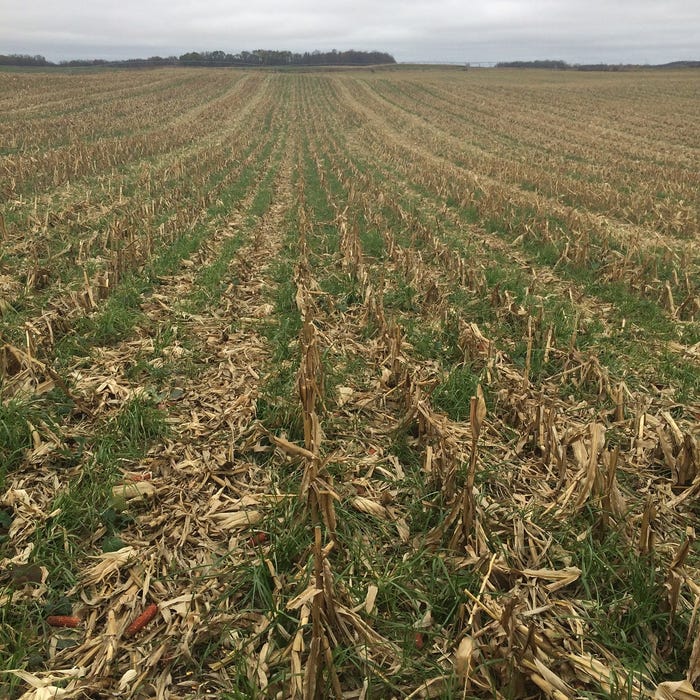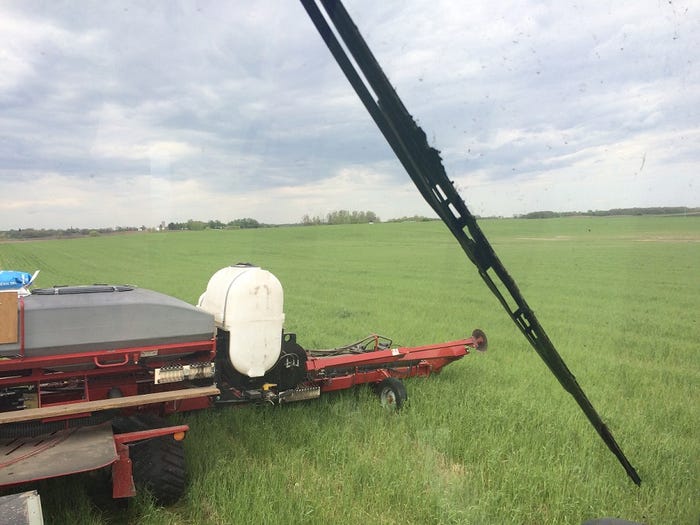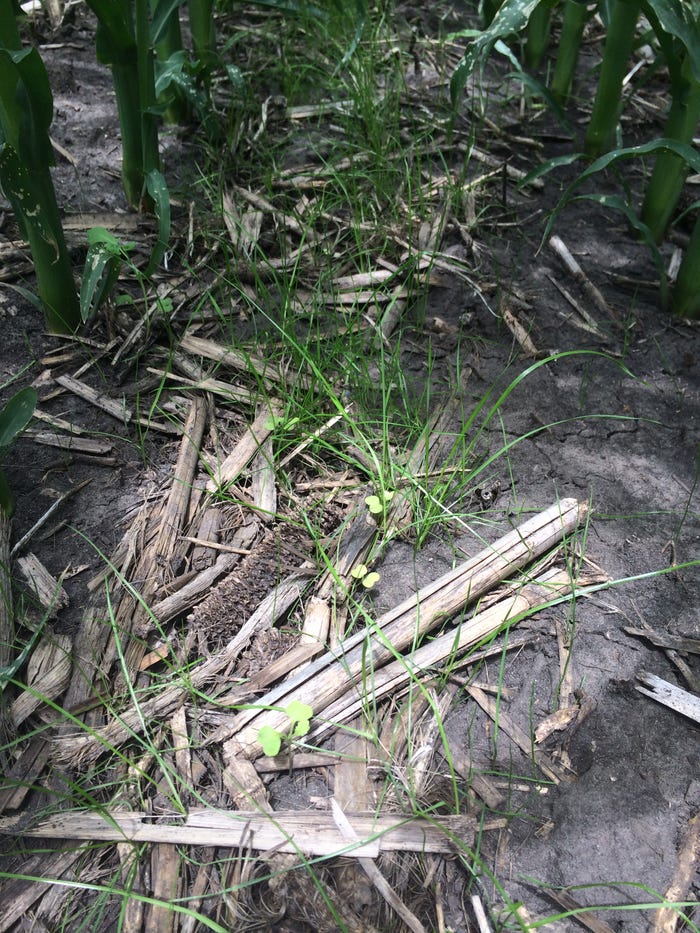September 5, 2018

Think Different
If reducing tillage, add cover crops, suggests John Ledermann.
Try a few acres, and then increase as you learn.
If post corn and soybean harvest planting of cover crops are problematic, consider interseeding.
Add a shorter season crop, such as wheat, into the rotation for early post-harvest cover crop establishment.
Plant green to get the full weed control benefit of overwintering cover crops.
---------
By combining less row-crop tillage with wheat and cover crops, John Ledermann has cut costs and boosted soil health. This more complex system involves mixing cover crops with wheat, followed by either corn or soybeans, alternating those crops for four years, then back to wheat again.
The system has had its ups and downs for the Brandon, Minn., farmer, but so far, the ups outweigh the downs.
"I started strip tilling my corn and no-tilling soybeans in about 2011 and started with a few acres of cover crops at the same time, reaching about 60% of my acres in 2016," says Ledermann. "I'm still learning, and sometimes it is hard to see a short-term benefit. Sometimes it even looks like a negative impact, but then you see a positive boost. I've reduced my herbicide use and seen yield bumps in both corn and soybeans."

This interseeded annual ryegrass is coming on strong post-harvest. John Ledermann prefers interseeding annual ryegrass over cereal rye for its ability to better tolerate canopy closure.
Interseed cover crops
Farming about 50 miles east of the intersection of Minnesota and the North and South Dakota border adds a few challenges to successful cover cropping. Waiting until harvest to plant covers can be iffy. To reduce the risk of waiting, he interseeds corn acres at V3 to V5 with annual ryegrass, often adding some clover, rape or kale. He also uses wheat to boost his cover crop benefits.
"I broadcast red clover with fertilizer before planting wheat," explains Ledermann. "After wheat harvest, I come in with cereal rye and radish, but that can be a challenge if we get rain. To get the full benefit of the radishes, they need to be in by August 20. Even planting September 1 can reduce growth. I will terminate the clover before freeze up."
Ledermann finds rotating from the wheat/covers into either soybeans or corn gives that year's crop a yield boost. It also lets him cut costs. Last year he reduced his nitrogen rates on corn by 50 lbs. per acre following a wheat/clover combination (broadcast clover seed with fertilizer, then drilled wheat). When the wheat was harvested, clover growth took off. The result: Yields matched a control strip with the full rate of N.
Herbicide savings
For the past two years he has experimented with planting corn green into the overwintered rye. The hope is to reduce herbicide needs, and he is seeing some success there. "After termination, I do a single post application in late June," says Ledermann.

Planting soybeans green in standing cereal rye has lowered weed pressure and the need for a pre-emerge herbicide in all but soybeans planted for seed.
Planting soybeans green is also suggesting potential herbicide savings. "Even on my non-GMO seed beans, I've done some with a pre-emerge and some without, and I don't see much difference," says Ledermann. "I terminate the day before I plant, and it keeps the weeds down until mid-June."
Interseeding does make herbicide selection more challenging. "On corn I avoid any grass residual, but with waterhemp becoming more of a problem in the area, controlling it with a broadleaf residual is a priority over interseeding a broadleaf cover crop," he says.
While he doesn't see a yield boost in the corn following the interseeded ryegrass, he likes the weed control it offers, especially with an early corn harvest. When the corn comes off in early October, ryegrass root mass can be significant by November 1. However, the late harvest in 2017 followed by an early freeze up gave the ryegrass little opportunity. That meant little benefit this spring to counter the cost of termination.

Interseeding broadleaves like kale is challenging when control of problem weeds like water hemp are a priority. While the annual rye grass is doing fine in this waist-high corn, the yellowing kale are showing herbicide carryover.
Seeing big soil benefits
Even without the full benefit of the cover crop on the interseeded acres this spring, Ledermann is confident of value received over all. "It's all about improving the soil," he says. "After four or five years, I really started to notice improved soil textures and water infiltration. We can get a two-inch rain, and it soaks in fast. Cover crops add to the diversity in the soil. They aren't magic. If you run into problems, you have to give them time."
About the Author(s)
You May Also Like




